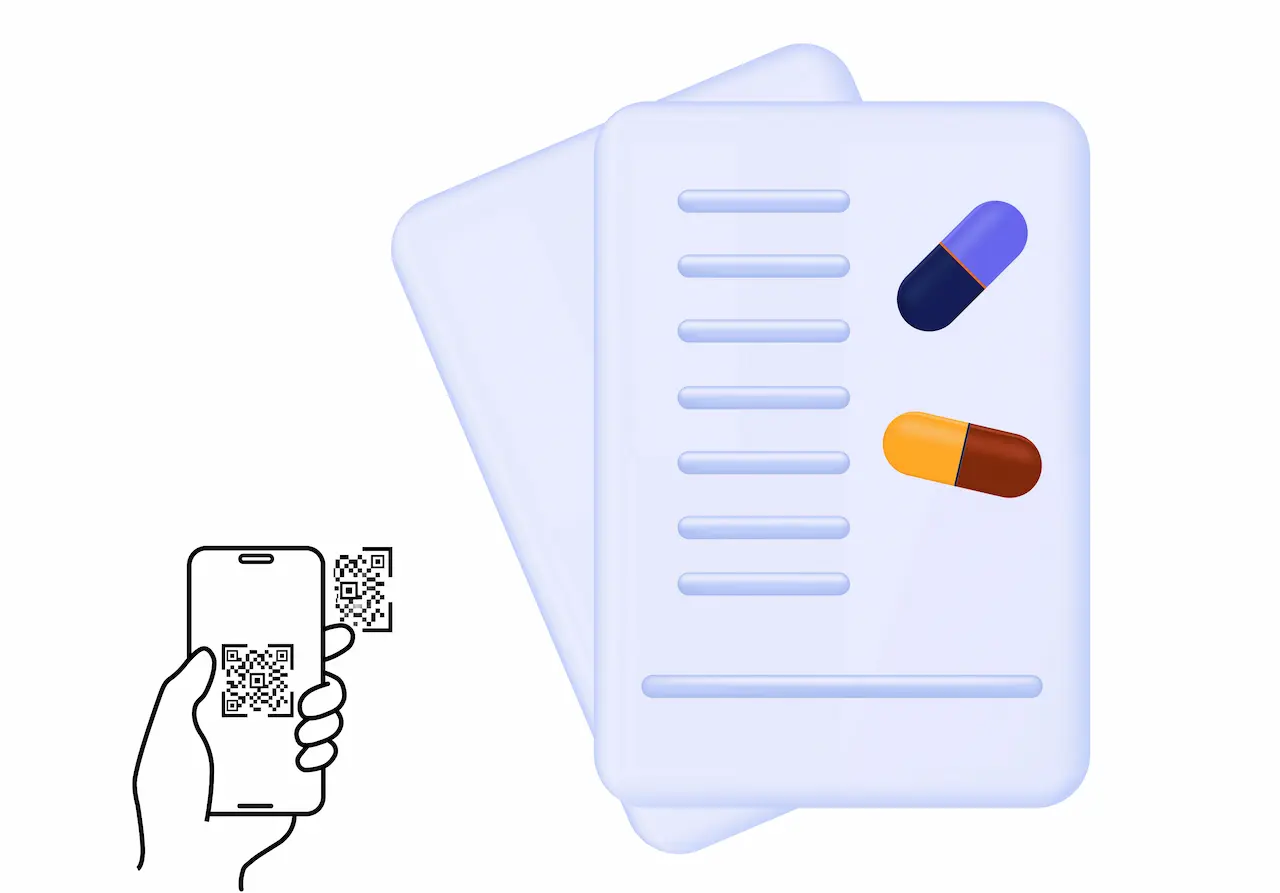Introduction
Let’s be honest: “PI compliance” isn’t the most exciting phrase in the pharmaceutical world. Yet, for anyone working in regulatory affairs or medical affairs, ensuring that Prescribing Information (PI) meets ABPI Code of Practice standards can feel like a never-ending puzzle. Throw in QR codes and digital distribution, and you might find yourself losing valuable hours chasing down updates, cross-referencing guidelines, and worrying about one-click access rules.
Fear not! In this article, we’re diving into everything you need to know about creating ABPI-compliant PI and QR codes, from the fundamentals of Prescribing Information, to the ABPI “one-click rule,” to step-by-step best practices for digital distribution. We’ll even discuss a few potential pitfalls (ahem, “my QR code links to a marketing page instead of actual PI!”) and how to avoid them.
So grab your beverage of choice – yes, a good old ‘cuppa’ absolutely counts – and let’s explore how to keep your pharma organisation on the right side of compliance, all while taking advantage of the latest digital tools and QR code technology.
TL;DR (Too Long; Didn’t Read)
- ABPI Code Update: You can use QR codes for printed promotional materials, but digital materials need a one-click link (QR code alone isn’t enough).
- PI Must Be Up-to-Date: Always include SmPC details, legal classification, cost, and adverse event reporting. Any changes to SmPC should be reflected in the PI immediately.
- QR Code Best Practice: Make your code permanent (so the link never changes), test on multiple devices, and link directly to the full PI—no extra marketing pages.
- Avoid Common Mistakes: Using only a QR code in digital ads, linking to outdated documents, or ignoring version control can all lead to non-compliance.
- Automation Tools: Consider solutions like Pi 360 to automate PI creation, generate permanent QR codes, and ensure compliance in both print and digital channels.
1: What Is Prescribing Information and Why Is It Required?
Prescribing Information (PI) is like the Swiss Army knife of pharmaceutical data. It contains critical details about a medicine – everything from dosage guidance and contraindications, to side effects and cost information.
Why PI Matters Under ABPI
- Must be included in promotional materials for prescription-only medicines.
- Clause 12 of the ABPI Code spells out how this information must be clear, legible, and easy to access.
- Ensures healthcare professionals can quickly and accurately understand how to prescribe, use, and monitor the medication.
The Risk of Non-Compliance: If your PI is incomplete or buried behind multiple clicks, you could face complaints from the Prescription Medicines Code of Practice Authority (PMCPA) or even draw the eye of the MHRA. No one wants a compliance headache!
2: ABPI Guidelines on QR Codes for PI
In the pre-QR code era, you’d see entire paragraphs of prescribing info stuffed into a marketing leaflet or jammed into the footer of an email. Now, the ABPI Code explicitly allows QR codes for printed promotional materials. Hooray! But let’s look at the rules:
- Printed Materials vs. Digital Materials
- Printed: You can slap a QR code on your brochure or leave-piece. As long as it’s prominent and leads directly to the full PI, you’re golden.
- Digital: If you’re sending an email or running a website ad, you can’t rely solely on a QR code. You must also provide a “direct, single-click link” to the PI. (Yes, that one-click rule is real.)
- Direct Link to Full PI
- The QR code must point to the entire PI (including SmPC, legal classification, cost, and adverse event reporting).
- No “landing pages” or marketing fluff in between – just link straight to the official info.
- Quality Counts
- Scannability matters. That means good contrast, enough white space, and a decent size.
- Test your code on multiple devices. If your code’s too pixelated or hidden in a corner, you’ll lose the compliance (and practical) benefits.
3: Step-by-Step Guide to Creating ABPI-Compliant PI & QR Codes
Step 1: Prepare Your PI Content
- Gather All the Essentials: Start with your approved SmPC, ensuring you incorporate the legal classification (e.g., POM), cost information (excluding VAT), and relevant warnings.
- Format for Readability: Keep your text legible and logically structured. If it’s a digital version, consider a mobile-friendly design (most people scan QR codes on smartphones).
- Check ABPI Requirements: Is your disclaimers, cost data, and adverse event reporting statement included?
Step 2: Generate a QR Code
- Permanent URL or Redirect: Make sure your link is stable – if you plan to keep your PI up to date, consider a permanent URL that never changes.
- Scan & Test: Before printing 10,000 brochures, test your code on different devices to avoid “Oops, it’s not linking to the right doc!” syndrome.
- Metadata: Some advanced QR code tools let you track analytics – like how many times it’s scanned. Great for audits and continuous improvement.
Step 3: Publish & Monitor
- Printed Materials: If you’re printing a brochure, ensure the code is placed in a visible spot with a clear call to action: “Scan for full Prescribing Information.”
- Digital Channels: Always include a one-click link if you’re emailing or posting online.
- Track & Update: If the SmPC changes, your PI must be updated. Make sure your process is automated if possible – nobody wants to do manual updates every time the MHRA modifies something.
Pro Tip: Dedicated digital PI & QR code generation tools can automate these updates so you don’t have to re-generate a new QR code or manually upload a new PDF every time. It’s the difference between chasing 50 update tasks or letting the system do it for you.
4: Common Compliance Mistakes & How to Avoid Them
- Mistake 1: Linking to Non-Compliant Pages
- Example: You create a QR code that lands on a marketing “about us” page instead of the PI.
- Solution: Always link directly to the full PI. No detours!
- Mistake 2: Using Only a QR Code in Digital Promotions
- Why It’s Wrong: The ABPI Code demands a single-click link for digital. A QR code alone forces the HCP to grab a phone, open the camera, etc., which is not “one-click.”
- Fix: Provide a text hyperlink in your email or webpage.
- Mistake 3: Neglecting Version Control
- Consequence: If the SmPC changes and you’re still distributing an outdated PDF, that’s a compliance risk.
- Remedy: Implement an automated system that syncs new SmPC data to your digital PI in real time.
5: The Future of Digital PI & QR Codes in Pharma
QR codes are no longer a novelty – UK pharma is embracing them for printed materials, conferences, and even e-detailing. Here’s why they’ll matter more:
- User-Friendly: HCPs can access up-to-date PI without rummaging through disclaimers or multiple links.
- Evolving ABPI Code: We expect the ABPI to keep refining digital guidelines, potentially encouraging more interactive elements.
- Automation & AI: Tools that pull data from regulatory databases, auto-generate PDFs, and create permanent QR codes are quickly becoming the norm.
Pi 360 is one example of how smaller to mid-sized pharma can automate it all: generate a single PDF that merges the SmPC with additional required data, spit out a permanent QR code, and keep track of everything in a neat dashboard. If that’s not the future of PI compliance, we’re not sure what is.
Conclusion
ABPI-compliant Prescribing Information doesn’t have to be a headache. With QR codes now officially recognised for printed materials, pharma companies have a golden opportunity to reduce clutter, streamline compliance, and improve user experience for healthcare professionals.
Key Takeaways:
- Know your ABPI Code: Clause 12.1 allows QR codes for printed promo, but not as a sole method in digital materials.
- Test thoroughly: A non-working QR code or outdated PI can backfire.
- Consider automation: Dedicated tools for digital PI creation and QR code generation can save time, ensure consistency, and reduce compliance risks.
Ready to Simplify PI Compliance?
- Check out Pi 360 if you’re looking for a flexible, automated solution that merges the SmPC with mandatory PI elements and creates a permanent QR code for your materials.
- Still have questions or unsure where to start? Contact us for a quick chat about how to keep your PI in line with ABPI guidelines – without the manual hassle.
FAQs
Q1: What are the ABPI requirements for QR codes in printed materials?
A: They can be used to direct HCPs to the full PI but must be clear, scannable, and link directly to the latest info.
Q2: Can I use only a QR code in digital advertising?
A: No. The ABPI Code requires a single-click link for digital promotional materials, so a QR code alone isn’t enough.
Q3: Do I need to include pricing in my PI?
A: Yes, ABPI Clause 12 mandates cost information for POM products (excluding VAT).
Q4: How do I handle PI updates if the SmPC changes?
A: Consider automating the process with a dedicated tool, ensuring your QR codes and PI remain compliant and up to date.
Final Word
Implementing ABPI-compliant PI with QR codes shouldn’t be rocket science, and with the right processes – or digital solutions – it can even be, dare we say, straightforward. If you’re ready to cut down on manual tasks and keep your promotional materials fully compliant, digital automation is your new best friend.
So, go forth and conquer PI compliance. Your regulatory team (and, yes, your marketing folks, too) will thank you!



